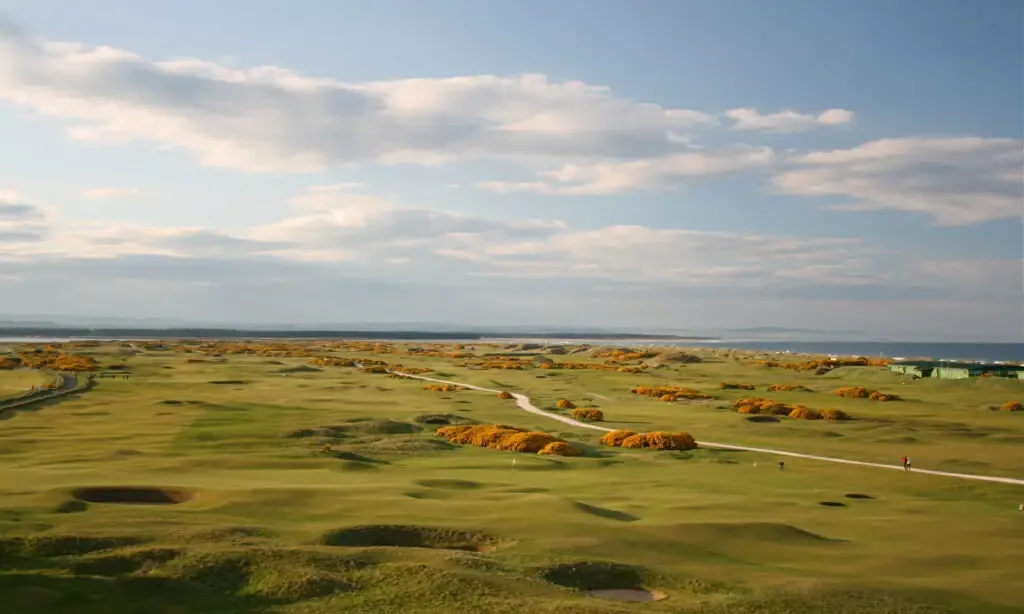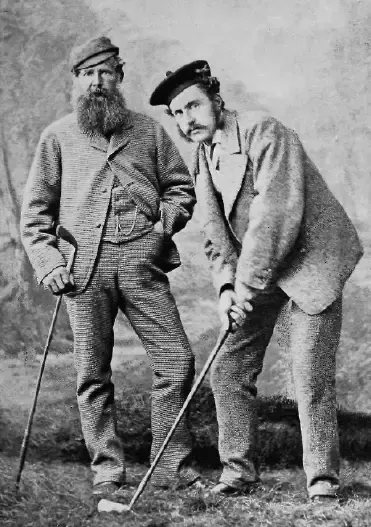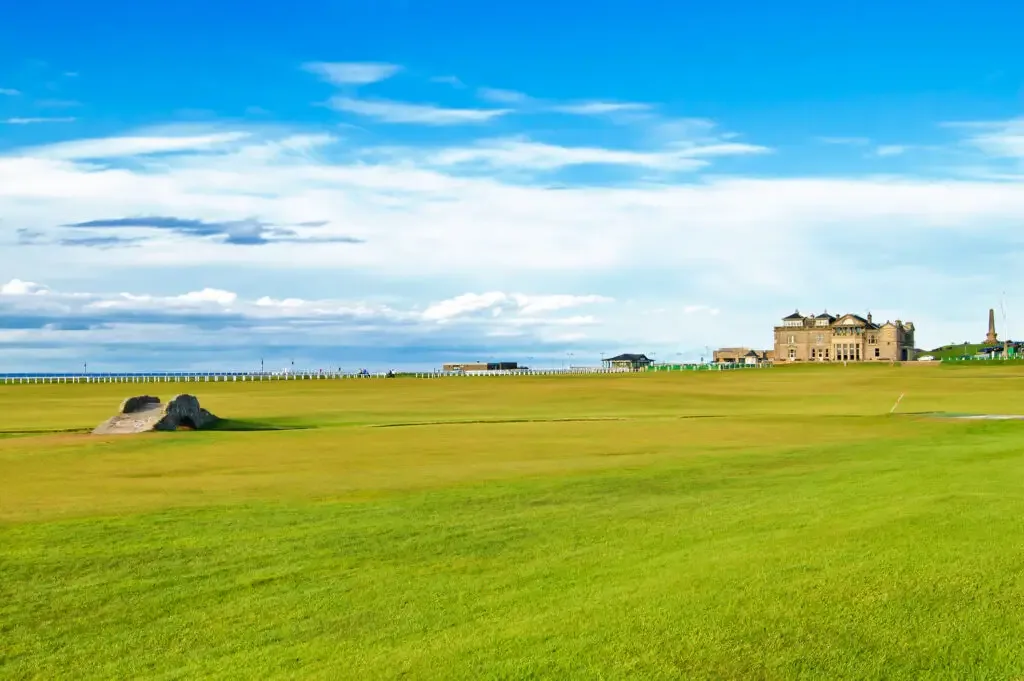The origins of golf can be traced back to various ancient ball games, but it was in 15th-century Scotland that the modern game we know and love today was born.
This period saw the emergence of key golfing traditions, the establishment of the first golf courses, and the adoption of the game by both nobility and commoners.
The Early Days of Golf in Scotland
Although the precise origins of golf remain a subject of debate, it is widely accepted that the game’s modern form emerged in Scotland during the 15th century.
Early Scottish golfers used wooden clubs to hit leather balls stuffed with feathers, known as “featheries,” across expansive landscapes.
These rudimentary courses typically featured natural hazards such as dunes, gorse bushes, and sand bunkers, which helped define the unique character of Scottish links golf.
Want to experience golf like this without having to travel to Scotland? Go to Bandon Dunes!
The First Golf Courses

St. Andrews, considered the “home of golf,” is one of Scotland’s earliest and most iconic golf courses.
Although the course wasn’t officially established until 1754, Scots has been playing golf on the land that St. Andrews currently sits since the early 1500s.
The Old Course at St. Andrews has evolved over the years to become one of the world’s most revered golfing venues.
Other early Scottish golf courses include Leith Links, Montrose, and Musselburgh, all of which contributed to the development of the sport and its distinctive playing style.
Golf and the Scottish Monarchy

Golf’s popularity in 15th-century Scotland was bolstered by the enthusiasm of the nation’s monarchs.
King James II, who ruled from 1437 to 1460, was an avid golfer but still passed an act in 1457 banning the game to encourage his subjects to focus on archery, a more practical skill for national defense.
This was the first written reference to golf that historians have found.
Despite the ban, golf’s popularity continued to grow, and subsequent monarchs, including King James IV, embraced the sport and contributed to its advancement.
The Development of Golfing Traditions

During this period, several key golfing traditions were established, including the concept of playing 18 holes per round.
Early Scottish golf courses often featured an arbitrary number of holes, but by the late 18th century, the standard 18-hole format had begun to take shape.
This transition was spurred in part by the Old Course at St. Andrews, which originally featured 22 holes before being reduced to 18 in 1764.
Golf’s Social Impact

Golf in 15th-century Scotland transcended social boundaries, attracting players from various walks of life.
Nobles, merchants, and commoners alike were drawn to the sport, and friendly competitions often took place between different social classes.
These early golfing events helped foster a sense of camaraderie and community, further cementing the game’s status as a beloved Scottish pastime.
The Spread of Golf Beyond Scotland

As the popularity of golf grew in Scotland, the game started to expand beyond its borders.
By the 16th century, the sport had spread to England and the rest of the British Isles.
Scottish traders, diplomats, and soldiers played a significant role in introducing golf to other countries, paving the way for the game to become a global phenomenon.
The birth of modern golf in 15th-century Scotland laid the foundation for a sport that has captivated players and spectators around the world for centuries.
Related: What Does Golf Stand For?

